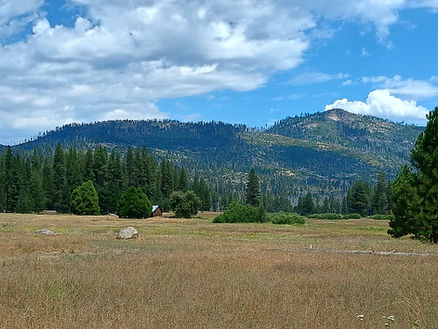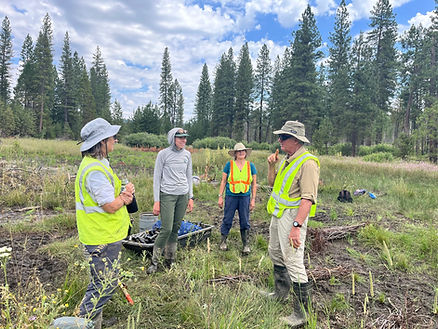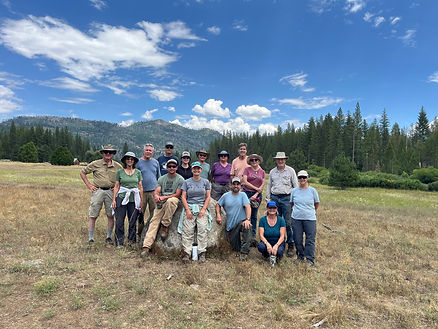balzaccom
Member
- Joined
- Sep 30, 2014
- Messages
- 869
Public Service: Ackerman Meadow
I spent Thursday doing my bit to improve Yosemite National Park, working on a restoration project at Ackerman Meadow. It was a full day of hard work, comraderie, and learning, all wrapped up in a beautiful location that's under the radar for most people visiting the park.

The work party was organized by CSERC-- the Central Sierra Environmental Resource Center (link here: https://www.cserc.org/.
I've done work with them in the past: good peopple doing good work based on solid science.
We met at 7 am for the drive into Yosemite, where a group of a 15 or so volunteers the met our bosses for the day, rangers Slim and Mel. They gave us a quick overview of the project and then set us to work for the day.

Ackerman Meadow was recently acquired by the park, and a century of cattle grazing had significantly degraded the stream. That, in turn, had dried up most of the meadow, which at one point was a massive wetland. As the cattle wallowed in the streambed, the water eroded that into a deep channel, bypassing the acres and acres and acres of meadow.
What to do?
First off, after intensive studies, the lower part of the streambed was levelled off and Beaver Dam Analogs (AKA BDAS, a fancy name for man-made beaver dams) were installed to slow the water flow in the lower meadow and spread it out into the newly restored wetlands.

That accomplished, the next stage was to replant those acres and acres of the lower meadow, now muddy and sloppy with slow-moving water, with native plants. That's where we came in. If you've ever wonderful what it would be like to plant a rice paddy, this was your chance.
We were provided with wellington boots (Muck boots) and a dibble. The dibble forced holes into the mud, and we filled those with plants, lots of plants. Every 18 inches, another plant.
So it was dibble in dibble out, plant out of sleeve, plant into ground. 98 plants to a rack,, and we lost count of how many racks we planted. Even with breaks for snacks and water, and another break for lunch, we ran out of racks and plants. Slim and Mel were pleased.

Another group decided that playing the mud wasn't for them. They spent the day collecting seeds from valued native plants--and ended up with a huge box bulging with seeds to be planted in the future.
While we were there, we met a biology professor from UC Merced and her students, who were studying voles in the meadow, and a pair of scuba diving biologists who were studying and collecting turtles. We felt part of a large team of people doing our best to well by Yosemite.

Once we completed our work, Mel gave us a tour of the project, complete with some traces of local Native Americans, live turtles from the scuba guiys, and an excellent comparison of the gully in the upper meadow vs. the rich wetlands lower down. The upper meadow gets more work done soon. And among the flowers that are recovering are some rare pansy monkeyflowers--all made possible by this project.
A great way to spend a day, and to give back to a park that has been such an important part of my life.
Photo log here: https://photos.app.goo.gl/EBup5bT94Na8ofMMA
